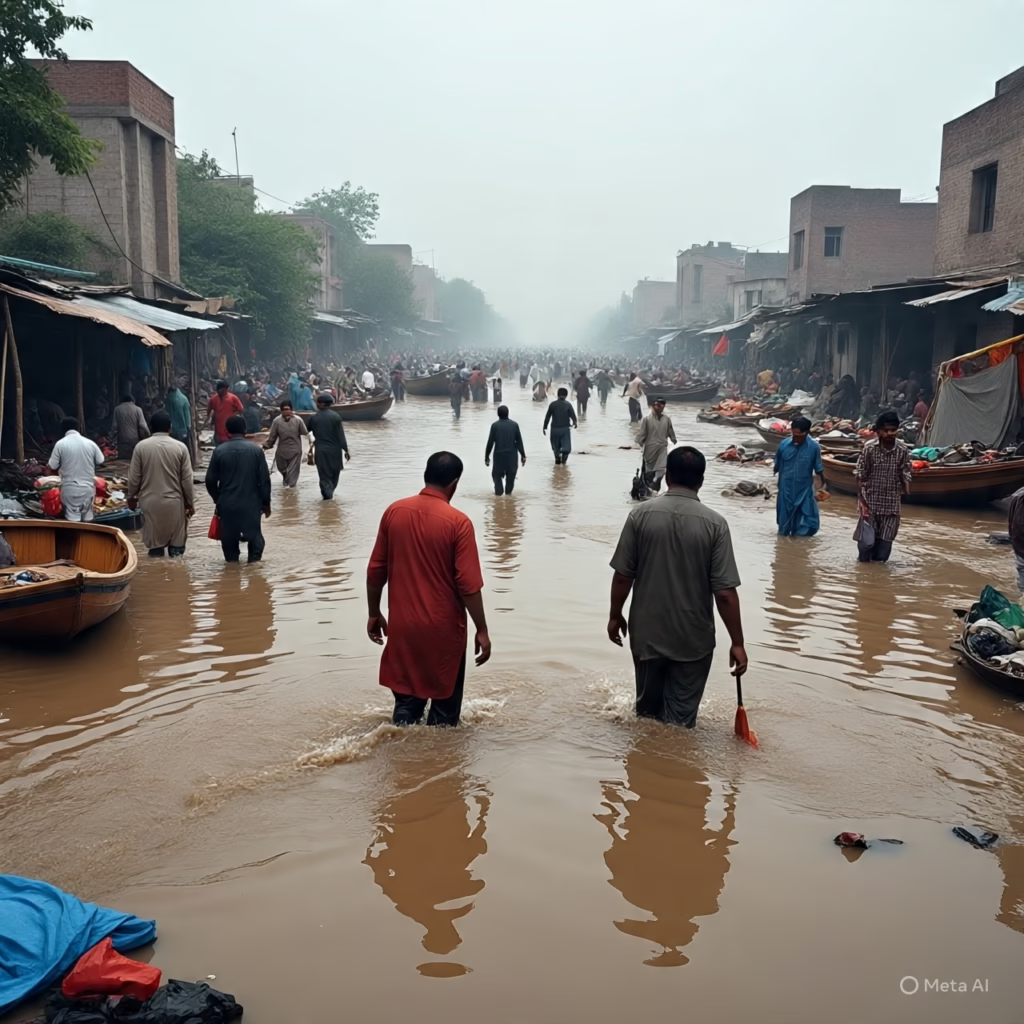
Title
Karachi Monsoon Floods Bring City to Standstill
Blog Content
The recent monsoon rains have unleashed unprecedented flooding across Karachi plunging the city into chaos and prompting urgent calls for infrastructure reform
Heavy downpours on August 19 and 20 2025
dropped between 80 mm to 178 mm of rain in different neighborhoods in just one day . Around the airport the rainfall reached 163.5 mm—the highest since 1979—and in northeast Karachi 178 mm, marking the highest reading since that weather station began operating five years ago .
This sudden deluge overwhelmed Karachi’s
drainage system which is built to handle just 40 mm of rain . Resulting floods paralyzed key thoroughfares such as Sharea Faisal University Road II Chundrigar Road and various underpasses . Areas like Malir saw water levels rise up to four feet, forcing residents to abandon vehicles and navigate treacherous floodwaters on foot .
At least 10 to 12 people have died due to drowning
electrocution and collapsing walls across the city . Essential services were gravely affected with widespread electricity internet and mobile network outages . Flight operations at Jinnah International Airport were disrupted with multiple cancellations and delays . In response the provincial government declared August 20 a public holiday .
City officials and volunteers mobilized quickly
. The mayor and municipal agencies deployed resources for relief while emergency shelters and helplines were activated .
Why This Flood Was So Severe in Karachi
This was not simply a freak weather event but a disaster amplified by structural flaws in urban planning. Karachi’s storm‑water drains or nullahs have been obstructed over decades due to informal settlements encroaching on natural waterways illegal dumping and insufficient waste management . Many natural drainage channels have been built over or narrowed creating bottlenecks during deluges .
Moreover decades of underinvestment karachi
have left the city without effective drainage modern sewage treatment or cohesive governance structure. Fragmented responsibilities and political gridlock between local provincial and federal agencies have kept infrastructure rehabilitation on hold .
What Must Be Done karachi
1. Overhaul drainage infrastructure
— clean and widen nullahs restore natural waterways and upgrade to handle extreme rainfall .
2. Implement comprehensive waste management in Karachi
— ensure garbage reaches landfills and does not clog the storm drains .
3. Promote green and resilient urban design
— adopt sponge‑city concepts using permeable surfaces and green infrastructure to absorb and slow runoff .
4. Strengthen local governance frameworks karachi
— clarify jurisdiction roles coordinate across agencies and empower city institutions for long‑term planning and response .
http://Link “drainage infrastructure” to your site’s page on urban planning
http://Link “sponge‑city concepts” to the World Bank blog on building resilience in Karachi .
Would you like me to help draft those internal link target pages too or suggest more resources on flood recovery and resilience planning?
You might to like read this blog
https://manyviral.com/can-trumps-big-beautiful-bill-pass-the-senate/
Leave a Reply